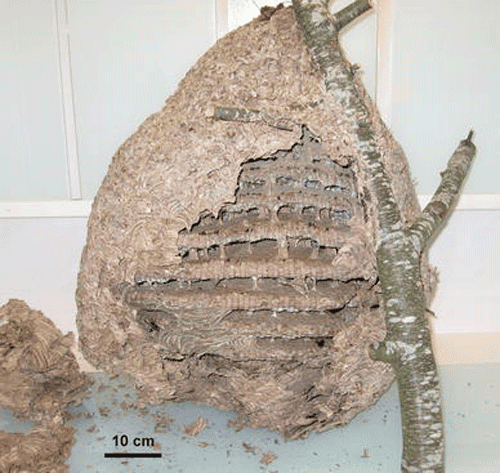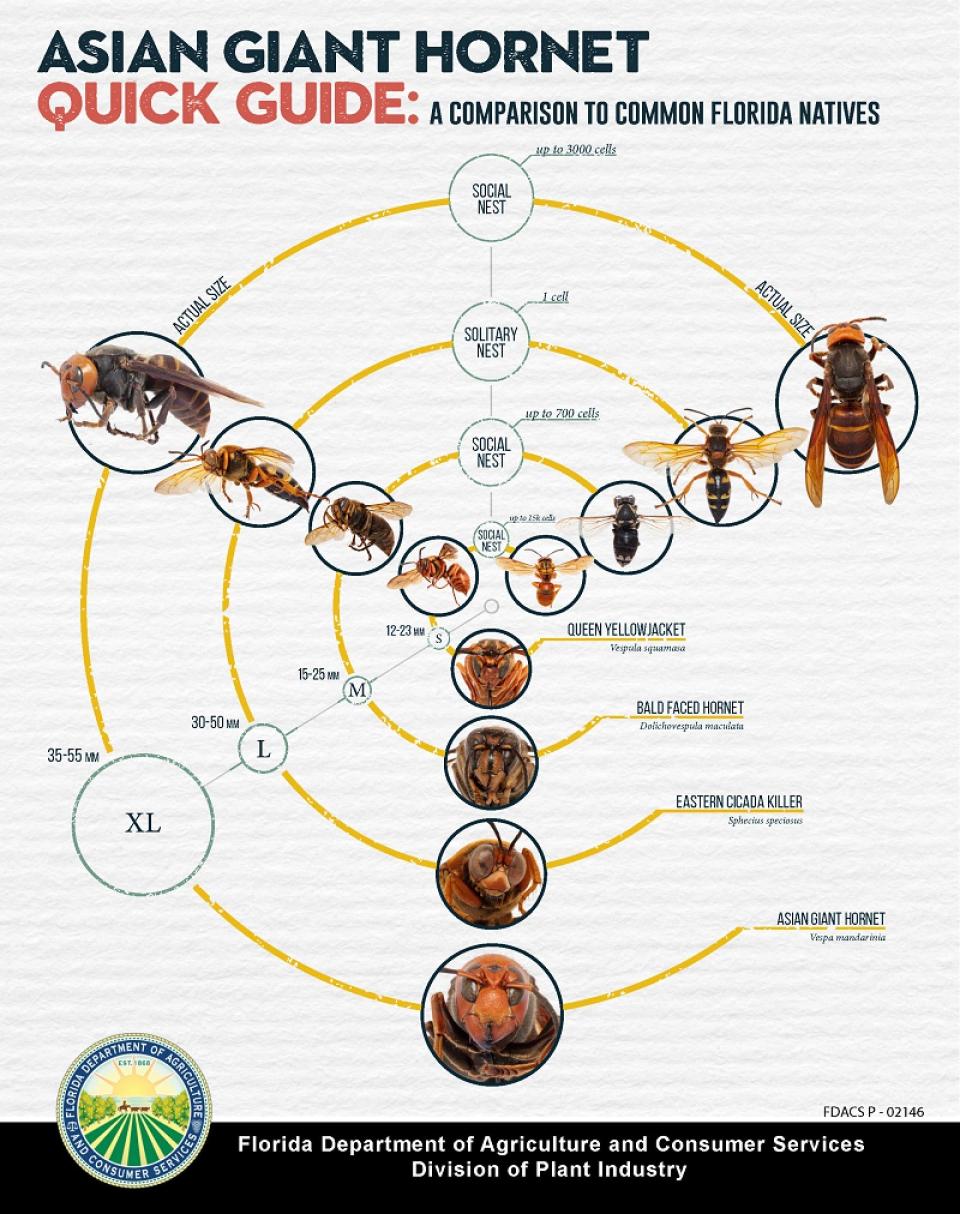Yellow-legged hornets show up in US. 9 things you should know as Florida keeps watch
As if the alligators, crocodiles, disease-carrying mosquitoes, Burmese pythons — we'll stop there — weren't enough, now we need to keep our eyes peeled for the latest invasive species: the yellow-legged hornet.
The predatory hornet, which has already brought significant damage to bee populations in Europe was spotted for the first time in the the United States earlier this month.
A backyard beekeeper in Savannah spotted two of the hornets earlier this month and contacted the Georgia Department of Agriculture.
Deadly Florida wildlife: Which Florida animals are the most dangerous? Interacting with these creatures can turn deadly
The University of Florida Institute of Food and Agricultural Services, along with the Florida Department of Agriculture and Consumer Services, have joined forces to "prevent the spread of this destructive hornet throughout the South," according to Meredith Bauer, senior public relations specialist at UF/IFAS Communications.
Yellow-legged hornets pose threat to Florida honeybees
Besides feeding on a number of insects, the predatory hornet spotted in Georgia could mean trouble for Florida’s honeybees if it spreads farther south, according to UF/IFAS.
"Vespa velutina poses a major threat to the beekeeping industry ... because it reduces honeybee productivity by preying on individuals," according to a release from UF/IFAS.
"Honey bees in North America have no natural defenses against the yellow-legged hornet, so keeping this species from making a home in Florida is of the utmost importance to our honey bee populations and thus our food supply,” said Amy Vu, state specialized program extension agent for the University of Florida/IFAS Honey Bee Research and Extension Laboratory.
An opportunistic feeder that will even feed on decaying animals, the yellow-legged hornet prefers honeybees, which seem to be an easier target compared to other species.
"These pollinators play a significant role in Georgia’s agriculture industry, the state's main economic driver, and it is imperative that these invasive pests are tracked and eradicated," the Georgia Department of Agriculture added.
Are yellow-legged hornets aggressive?
The hornets are not very aggressive toward humans and attacks only when it feels threatened, according to the National Library of Medicine.
However, the agency reported that over the past decade, French poison control centers have received several calls about patients who have not been stung but experience symptoms in their eyes associated with the yellow-legged hornet.
Symptoms included eye redness and pain. Symptoms were resolved quickly, usually within a few hours, after irrigating the eyes with water or saline solution
Projection of a liquid into the eyes by the yellow-legged hornet presents a new risk to human health, but its precise nature remains to be determined, the National Library of Medicine said.
Where do yellow-legged hornets come from?
The yellow-legged hornet, Vespa velutina, is native to Southeast Asia. They first appeared in France in 2004.
By 2018, they had spread to Spain, Portugal, Belgium, Italy, Germany, United Kingdom and Holland.
Some reports from Europe mention up to 30% of honeybee hives have been weakened by attacks and approximately 5% have been destroyed.
Do the hornets really have yellow legs?
The legs are partially or primarily yellow. It is one of their identifying features.
Have any been spotted in Florida?
Not at this time.
This is a call to action for gardeners and backyard beekeepers to keep an eye open and catch them if it's safe to do so, said UF experts.
Exotic pets: The dumping of exotic pets into the wild is a serious threat to Florida
Where do yellow-legged hornets build their nests?

This hornet is a social wasp that constructs egg-shaped paper nests above the ground, often in trees, but also in bushes, shrubs and roofs.
The nest grows larger during the growing seasons (from spring to autumn), and can reach around 6,000 individuals on average, according to UF/IFAS. The colony expands with the construction of secondary nests.
Queens become active around March, laying eggs around April, and workers become active in June.
Increasedpredation of honeybee colonies occurs by the wasps in the summer.
The Vespa velutina life cycle is annual and all workers and males die at the end of the season.
New nests are built by founder queens at the beginning of each year.
How to identify a yellow-legged hornet, and differentiate from 'murder' hornets
Adults are about the size of a nickel. The key distinguishing feature is their yellowish/whiteish legs. The end of their stingers also is yellow.
The yellow-legged hornet is smaller, but similar to the Vespa mandarinia, known by its nickname the “murder hornet,” which has a distinct orange mark on its head.
The yellow-legged hornet is best identified by its yellowish-white-colored legs, is about 1.2 centimeters to 3 centimeters long, and has a broad orange-yellow face with large, prominent eyes. The thorax and abdomen are mostly black with a single yellow section near the end of the abdomen, according to UF/IFAS informational documents.
Who to contact if you catch or think you spot a yellow-legged hornet
To report a suspected yellow-legged hornet email dpihelpline@fdacs.gov or call the FDACS hotline at 1-888-397-1517.
How to tell the difference between Florida hornets and invasive species
The University of Florida/IFAS provided this chart to help residents tell the difference between various species of hornets found in Florida.

This article originally appeared on Treasure Coast Newspapers: Florida officials want to avoid spread of yellow-legged hornet

